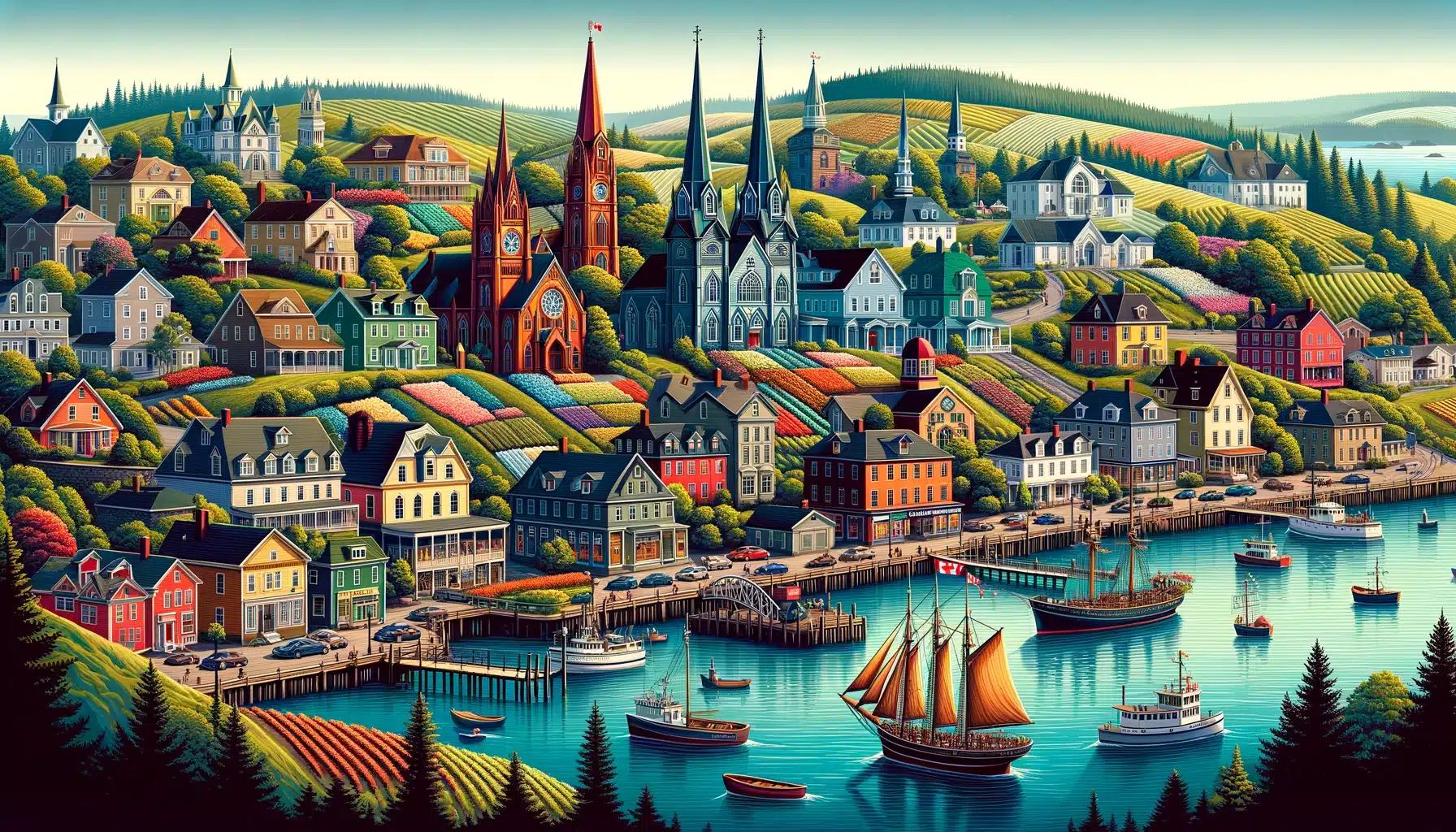Five towns in Nova Scotia you need to see

The history of settlement in Nova Scotia is a tapestry of indigenous habitation, European exploration, and colonial competition that reflects the broader narrative of North American colonization. This eastern Canadian province, known for its rugged coastlines and maritime heritage, has been inhabited for thousands of years, with its history deeply rooted in the interactions between its indigenous peoples and European settlers.
Long before European explorers set foot on what would become Nova Scotia, the land was inhabited by the Mi’kmaq people. The Mi’kmaq were part of the Algonquian-language family, living in seasonal settlements throughout the region, known as Mi’kma’ki. They were skilled hunters, fishers, and gatherers, with a rich cultural heritage and deep spiritual connection to the land.
Related: The five most beautiful towns in Quebec
The first recorded European exploration of Nova Scotia was by John Cabot in 1497, under commission from King Henry VII of England. However, it was the French who established the first permanent European settlement in Nova Scotia in 1605, at Port-Royal, in the Annapolis Basin. This settlement became part of Acadia, a colony of New France. The French and Mi’kmaq established alliances, intermarried, and traded goods and knowledge, contributing to a mixed culture that persisted even after British conquest.
Nova Scotia became a battleground for European powers during the 17th and 18th centuries, with control of the territory shifting between the French and the British. The Treaty of Utrecht in 1713 ceded Acadia to Britain, marking the beginning of British dominance in the region. The British sought to solidify their control by encouraging settlement by Protestants from other colonies and Europe, leading to the arrival of New England Planters and, later, the expulsion of the Acadians in the mid-18th century, a tragic event that deeply affected the region’s demographic and cultural landscape.
In the late 18th and early 19th centuries, Nova Scotia saw significant waves of immigration, including Loyalists fleeing the American Revolution, Black Loyalists seeking freedom from enslavement, and Scottish Highlanders escaping economic hardship and the Highland Clearances. Each group brought its own customs, traditions, and challenges, contributing to the province’s multicultural fabric.
The 19th century brought economic development driven by shipbuilding, fishing, and logging, establishing Nova Scotia as a key maritime province. The construction of railways and the rise of industrialization further transformed the region, leading to urbanization and the growth of cities like Halifax, the provincial capital.
Throughout its history, Nova Scotia has been shaped by its indigenous cultures, European colonial ambitions, waves of migration, and economic transitions. Today, it is known for its cultural diversity, historical sites, and stunning natural beauty, with its past playing a crucial role in its identity and heritage.
Five nicest towns in Nova Scotia
Nova Scotia, one of Canada’s maritime provinces, is renowned for its stunning coastal landscapes, rich history, and charming towns. While “nicest” can be subjective, depending on what one values—be it historical significance, natural beauty, cultural richness, or community spirit—there are several towns in Nova Scotia that frequently capture the hearts of both visitors and locals. Here’s an overview of five towns that are often celebrated for their unique allure:
- Lunenburg: Designated a UNESCO World Heritage Site, Lunenburg is famed for its well-preserved British colonial architecture, vibrant waterfront, and the iconic Bluenose II schooner. This town’s colorful buildings, bustling streets, and maritime heritage make it a picturesque and fascinating destination. Lunenburg also offers a wealth of galleries, shops, and seafood restaurants, showcasing the town’s rich culture and history.
- Mahone Bay: Known for its scenic beauty and the three churches that stand prominently along the waterfront, Mahone Bay offers a tranquil and charming atmosphere. The town hosts numerous festivals and events throughout the year, and its streets are lined with unique shops, art galleries, and cafes. Mahone Bay is also a great starting point for outdoor activities, including sailing, kayaking, and cycling.
- Wolfville: Situated in the Annapolis Valley, Wolfville is known for its stunning landscapes, including views of the Minas Basin and Cape Blomidon. The town is home to Acadia University, which contributes to its vibrant arts and culture scene. Wolfville is also at the heart of Nova Scotia’s wine country, with several wineries and vineyards in the surrounding area, making it a must-visit for food and wine enthusiasts.
- Annapolis Royal: Steeped in history, Annapolis Royal is one of the oldest continuous European settlements in North America. The town boasts a rich heritage, evident in its historic sites, including Fort Anne and the Annapolis Royal Historic Gardens. Visitors can explore the town’s past through its well-preserved architecture, museums, and cultural tours.
- Pictou: Known as the “Birthplace of New Scotland,” Pictou played a significant role in Nova Scotia’s history, as it was where the first wave of Scottish immigrants landed in 1773. The town’s waterfront features the Hector Heritage Quay, home to a replica of the ship Hector. Pictou offers a blend of history, culture, and natural beauty, with opportunities for hiking, beach visits, and exploring the local arts scene.
Each of these towns offers a unique glimpse into Nova Scotia’s diverse landscapes, rich history, and vibrant communities, making them some of the nicest places to visit or reside in the province.
ChatGPT
Writer
ChatGPT is a large language model developed by OpenAI, based on the GPT-3.5 architecture. It was trained on a massive amount of text data, allowing it to generate human-like responses to a wide variety of prompts and questions. ChatGPT can understand and respond to natural language, making it a valuable tool for tasks such as language translation, content creation, and customer service. While ChatGPT is not a sentient being and does not possess consciousness, its sophisticated algorithms allow it to generate text that is often indistinguishable from that of a human.
